
~::I originally published this review on The Headphone List. Now I wish to share it with my Head-Fi fellows::~
::Disclaimer::
The Kaiser Encore was given to me free of charge in exchange for my honest review, for good or ill.
The Kaiser Encore sells for $1,850.00
NobleAudio.com
____________________
For many in this hobby, Noble Audio has stood as a pinnacle of sorts. We’ve all looked at them, at one time or another, and lusted for their products. When you start out with your first audiophile IEM, you can’t imagine spending $1,850 on something so small and innocuous. But you can dream. Hell yes, you can dream! Noble’s original Kaiser 10 made an appearance in many a fantasy, let me assure you. It still holds the most 5-star ratings of any in-ear monitor on Head-Fi.org.
Fate being the shrew that she is, I never did get an opportunity to try the K10. I came very close to buying it once, but went with a newer product turning a lot of heads at the time, the Rhapsodio Solar BA10. That is a direct competitor according to the forums, one which led a few K10 owners to stray. I am still a big fan of Solar. It will remain in my rotation for a long time to come. That and the 64Audio U12 shall not leave my side anytime soon. Everything I test competes against them. It is a menacing hurdle for newcomers to clear.
When I contacted Noble Audio, I kinda spammed them. I hit up the main support address listed on their website, and sent Privet Messages on Head-Fi to both John Moulton and Brannan Mason. The rejuvenated Kaiser had my blood hot, and I simply had to try it out. I missed the K10, and I could not miss the launch of the Encore. I would not!
Brannan got in touch with me good and quick, and a review sample of the Kaiser Encore was sent out immediately after. 2 Day Air mail. If I didn’t know any better, I’d say they wanted to impress me. It worked.
He asked me if I would review their updated packaging and accessories if they sent it out later, after everything was finalized. I laughed, explaining how I didn’t give a **** about that stuff. Still, I said I would, even though it really wasn’t my thing. I’d do it for him, because I loved him. There must have been something I said to make Brannan nervous, because he decided against it.
Oh well. Probably for the best.
A few days ago I put on my journalist pants and asked John (the Wizard) if there was anything he wanted to share about his vision for Encore. The insights contained within his reply are most intriguing:
Indeed it is, good Wizard. Indeed it is.
I asked John what he meant by “more ‘awesome sauce’,” but he could not explain. It is too nebulous to nail down with words. He merely knows it when he hears it.
My Encore arrived in the traditional Pelican case, with a bunch of tips that don’t work for me (I use JVC Spiral Dots) and some stickers and a cleaning tool and… stuff. Good presentation. The Pelican case went into immediate use, while the stock cable went into immediate disuse… as is my way.


The ergonomics are quite good, while unusual. It is comfortable, but due to its unique shape, some cables struggle to work well with the Encore. I have the ALO Reference 8, which has angled 2-pin connectors. These hit my lobes, making it impossible to get Encore good and deep inside my ear. They are constantly falling out. The plusSound X6 T-Metal works better, but honestly, the cable which delivers the most comfort and best fit is the one I built: 4-strand 26AWG OCC SPC Litz terminated for balanced. It’s light and easy, and the ear loops are large enough not to interfere with Encore’s seating.
Being forged of metal, you can expect some weight. Next to my U12, they are huge, and very heavy. And yet, I say again, still comfortable, for all that. Not U12 comfortable, but not far off, either.


The Noble Kaiser Encore is a creature of clarity and detail. Every note on this massive soundstage is defined with frightful precision. There is vitality in the presentation which outruns my other IEMs. It is energetic and angry. I’ve never heard this kind of attack or crunch from an electric guitar. This is not a laid-back earphone. Encore is neutral with just a touch of warmth. There is too much liveliness and musicality to call these analytical, yet the resolution is such that you could certainly use these to analyze a recording with serious accuracy.
There is a special mix of smoothness and detail which allows all music to sound its best. The smoothness is enough to forgive disastrous mastering techniques, and the detail reveals everything, good or bad. Together is a marriage that flat-out works. Imperfections are heard, but you’re so in love with the tonality you gladly overlook them. Encore is a thing of masterful balance. It does it all, but never takes its pursuits so far as to alienate your average audiophile. It’s a philosophy most will appreciate.
Treble on Encore is bright and shimmering. It’s just shy of harsh to my ears. Since I favor warmer equipment you can assume my tolerance for bleeding highs is pretty low. I think most people will find it safe for their tastes. It is a natural treble, clean and free of sibilance. It’s just very, very present. Cymbals clash realistically and you can hear their reverberations articulated. It’s quite impressive.
The vocals are vivid, sharp, and splendidly detailed. They come off transparent and natural. Note weight is good and thick, but the mids are absolutely NOT lush. Nor or they thin. They have tremendous gravitas, uncolored, and honest. Whether male or female, the vocals render true and visceral. A singer’s texture and quirks are highlighted, making their unique style all the more evident.
Encore’s bass is sort of an enigma. It has the ability to hide when it’s not called for, but somehow manages to always maintain that balance of warmth and musicality. Without that, these IEMs would be prone to sounding cold and bright, due to that extreme treble. Instead, the low end keeps things cozy and organic. When a track brings in the bass, Encore fills out superbly well. Its sub frequencies are fast and textured with decent extension. You don’t get deep rumbles felt in the marrow of your bones, and you are never in doubt these are Balanced Armatures, as opposed to the more natural-sounding Dynamic Driver. I am accustomed to a heftier sound down below, and at first I feared Encore lacked the charms I desire. Yet after weeks of using these as my main set, I can say the new Kaiser delivers rather satisfying bass, however different it may be to my preconception.
Having an intimate familiarity with the U12, I am not easy to impress when it comes to soundstage. That said, Encore is a spacious sonofabitch. I’m not ready to say it’s as big as the U12, particularly when using the right module, but it gives you a grand soundscape to immerse yourself in. Add to that top-tier imaging and separation, and you have one of the finest executers on the market. There is so much air and space between the instruments, you feel like you can walk between them and study each player’s technique… aided, of course, by the best resolution I’ve heard in an IEM. It just feels real.

64Audio’s U12 is a very different IEM. This has been my favorite for a while now. It’s the warmest transducer I own, and I’m including full-size cans in that. Only the Sennheiser HD650 comes close. Somehow, the U12 combines great warmth, and enormous soundstage. It sounds a bit bigger than Encore. The bass is fuller, rumbling in deeper regions, and blooming in a more natural way. The U12’s low end quality is the closest thing you can get to a Dynamic Driver in the BA arena. Encore is tighter and more controlled, but the U12 is more organic and smooth. There is no question the U12 has more bass, and not by a small amount. It packs a monster low end. It’s too much for many folk. For Pinky, it’s perfect, using the ADEL B1 or APEX M15 modules. And quite frankly, I must give the U12 the win in this match. I’m just shy of a basshead, and what the U12 does down there fulfills me with abnormal finality.
Vocals are another matter. The U12 gives you the quintessential “lush” effect, due to its strong mid-bass and otherworldly smoothness. Lush is super enjoyable. But Encore renders those mids with extreme clarity, and a greater sense of detail. I experience a more transparent audio, with sharper definition. The U12 has a thicker sound, and while I do not call Encore thin, it comes off cleaner and more airy. Noble’s IEM creates a stark contrast between elements, making that space more evident. Whereas U12 likes to fill the whole stage with a flood of sounds. I love what the U12 does, but I think I prefer the transparency, clarity, and resolution of Encore.
It’s the treble that spoils the U12 for many enthusiasts. It extends well, but is recessed in the tuning. When you have loads of bass, thick, warm mids, and slightly hushed treble, it can make you feel there’s a veil over the music. My brain required a couple of days to adjust before that “veil” disappeared. Even then, the U12 does not dazzle you with its mastery of those high frequencies. It’s subdued and relaxed. They do their job, but nothing more. Encore KILLS THE U12 WITH TREBLE. Good treble, at that. Proper glitter. An excellent sense of light. Nothing cruel or grueling. Just a bright upper region that reveals all the wonders below.
Both IEMs have class-leading soundstage and imaging. They are grandiose, with depth and layering beyond reason. The U12 might be bigger, but only barely. Everything on their two stages is precise and identifiable. Encore has finer contrast and separation, which deepens the holographic effect of its rendering. Really, though, you can’t go wrong with either. They make other IEMs sound tiny.
Such as the Rhapsodio Solar. Sorry Solar. Ya know I love ya, but your soundstage is not very wide.
Solar’s frequency profile is decidedly U-Shaped. Not V-Shaped, but a gentle dip in the mids does exist. The vocals stand back a step or two on the stage, allowing a lovely swell of music to cushion them on either side. In this way, it’s very reminiscent of a live rock show, only you can actually hear the vocals. Ho ho. Solar builds the mids nice and thick, with real weight. They’re strong and clear. More so than the U12, yet still a far cry from Encore. Warmth and richness imbue the mids, and a surprising level of detail. Encore does all this as well, while also being even more meticulous and revealing, and without the vocals being recessed. Encore simply conveys a more vivid image.
Treble on Solar is oddly thick. There is sparkle, but not much air or brightness. It extends nicely and does so without ever approaching harsh. Next to something like Encore, however, Solar’s highs sound held back and frustrated. Encore is bold as brass, and gleams as if that brass has just been professionally polished.
Once again, bass wins out on my hand-picked IEMs. Solar uses two large Balanced Armatures for its subs, and it pays off. Compared to Encore, Solar’s lows have power, depth, and superior tonality. Solar also gives us great speed and texture. The lows just bloom so spectacularly, filling out the arrangement with delicious warmth. The only BA IEMs that beat Solar’s bass is, oddly enough, the U12. What can I say? I favor gear that takes the sub frequencies serious. Encore could learn a thing or two from these masters.
Something Solar does better than the others is stage depth. Perhaps a virtue of its U-Shape? The vocals pull me forward. I find I can almost wade through the music, feeling it swirl around me. It’s wholly engrossing. Imaging is just as good as Encore and U12, except on a smaller scope. These three are indeed top performers anyone can feel proud to own.

Because the Noble Encore is a bit on the warm side, with slightly elevated bass, it pairs well with just about any device you can imagine. If it were warmer, like the U12, you’d want a brighter DAP. If it were too bright, you’d want a warmer DAP. Just to keep things nice and balanced. But Encore is like the Meze 99 Classics, in that it is so dynamic, with a healthy low-end, and lustrous highs, it marries effortless with every player I own.

King of that pile is the Opus#2. This is a neutral-warm DAP, with strong yet smooth rendering. Highly refined, and insanely detailed, and the widest soundstage I’ve yet to hear. The Opus#2 plays to all of Encore’s strengths, even giving it some nice kick in the sub region. You will be hard-pressed to find a more natural, realistic DAP. It handles all its **** better than any other. As far as portable solutions go, this pairing is one of the smartest things you can do with your money.
Unless we’re talking about REAL smarts, and you want to save as much as possible, getting the most bang for your buck. Then I must recommend the Opus#1. I bought this AFTER I owned the Opus#2, because it is the finest sounding player in the sub-$800 range, according to my ears. It might possess even MORE dynamism than #2. It’s a little less smooth, with less body to the notes, though still very, very clear, clean and articulate. The soundstage is quite big, just not AS BIG as #2. But damn! Such glorious bass slam and treble sparkle. And those transparent mids! It really is a splendid DAP for Encore. It’s a splendid DAP for every IEM. Period.


You can’t go wrong with the Cayin i5, either. If you want to add a little color to Encore, the i5’s deep, warm sound will steal your heart. This DAP has powerful sonics and the most body and bass presence of the bunch. The treble is less free and open than the Opus set, so if you’re at all concerned about Encore’s high-end aggression, this is the wisest choice. The soundstage is more than adequate, and I love the full, rich timbre. The Cayin i5>Encore is to die for.
Only just recently, my principle music player was the AK120II. Opus#2 now holds that position, yet a piece of my heart will always belong to Astell&Kern. The 120II’s audio is like the finest silk flowing over the contours of a beautiful woman. There’s something so perfect and luxurious about it. The dynamics aren’t as high as the other players, but Encore is always willing to handle that for you. Together, the AK120II>Encore is one of the widest, clearest, and smoothest systems you can achieve with human funds.

On any one of these players I detected very little hiss. I don’t want to say there was none, because I think there was some low-level noise. With the exception of the AK120II, whose background is pitch black. But on the others, it was so low-level I had a hard time hearing it, even without music playing. I was under the impression the K10 is highly susceptible to hiss. Does that mean Encore is a little less efficient? I don’t know. Or maybe my ears are going? I heard a metric ****-ton of hiss off the balanced output of the older Cayin N5, using my then-top-set of IEMs, the JHAudio Angie. So I feel I am sensitive to it. Or I was at that time. Whatever the truth, on these DAPs Encore sounds amazing, in balanced, or single-ended. I invite you to buy them all. Not from me. Just buy them.
Well there you have it. Another review. Ya’all were betting I wouldn’t make it, weren’t you? Don’t lie. I can taste your contempt. In fact, this review was more or less easy to write. Encore made it easy. One has only to listen to them, be filled with desire, and put pen to paper. Or greasy fingers to keyboard. Don’t be afraid of your vices; they define you.
Noble Audio’s Kaiser Encore forced its way right alongside my previous favorite earphone. Its performance matches the U12 with ease, and in some ways, bests it. Which one do I prefer more? **** if I know. They are so different. I suspect my answer shall change with my mood. One things for damn sure, I can’t recommend the 64Audio U12 to just anybody. I have to know they are up for a hellish banquet of bass and recessed treble. Many folk can’t deal with those savage realities. Encore, on the other hand, I can freely suggest to almost every person and expect them to fall in love. It won’t be the absolute perfect IEM for everyone, but it will come awfully close. It is balanced for pure bliss, regardless of your bent. You’d have to be broken not to love it, at least a little.
-~::Pinky_Powers::~-











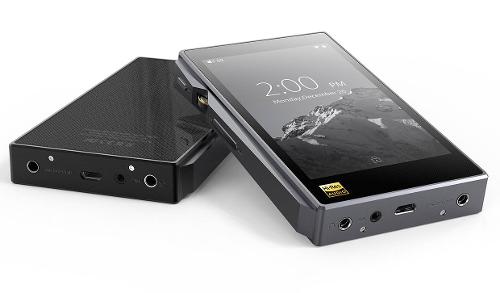
















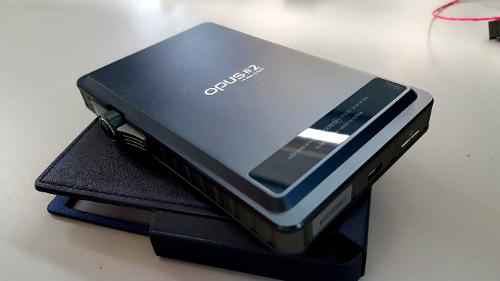
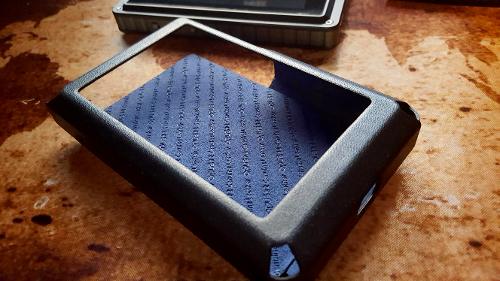

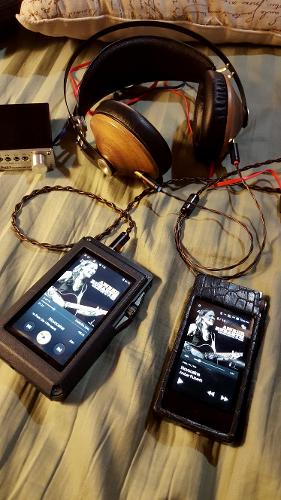







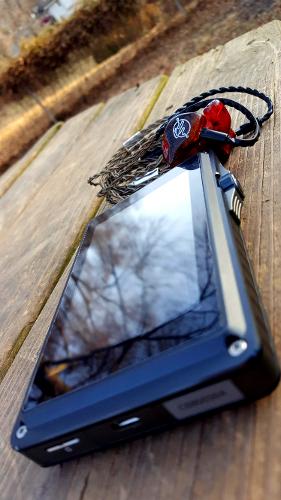















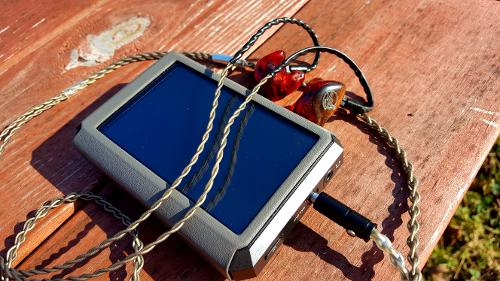
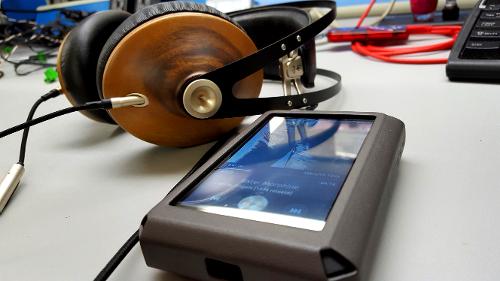

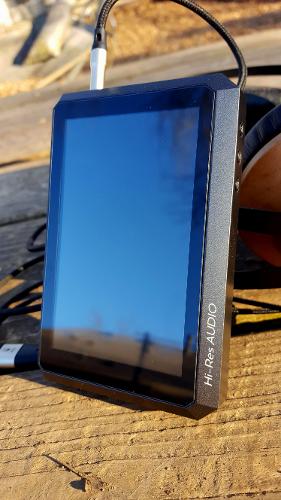







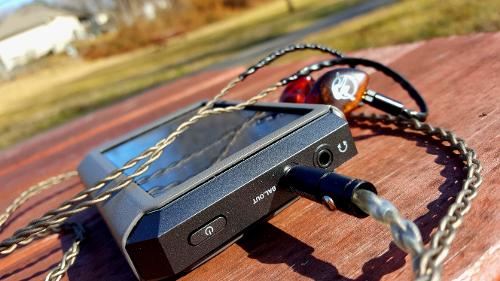


























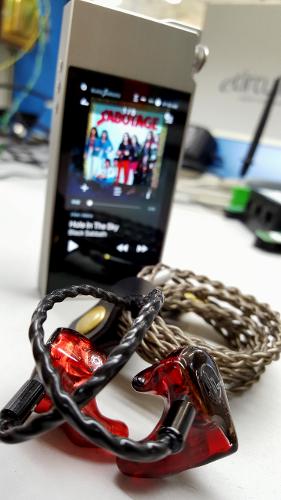










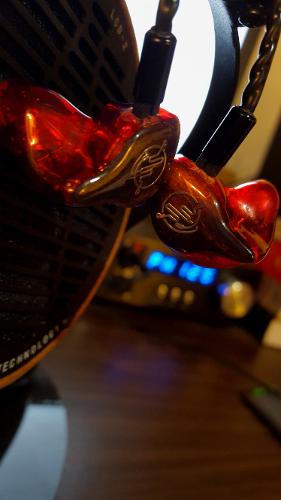






























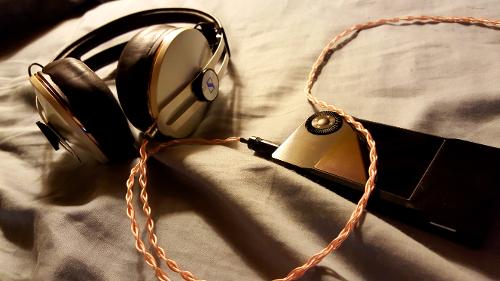
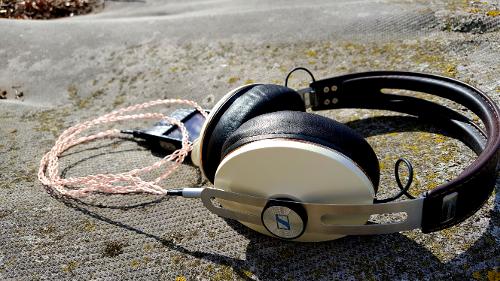
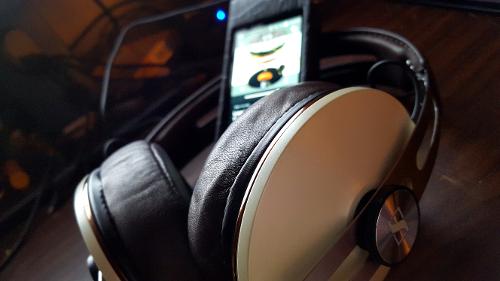


















































Nice review.